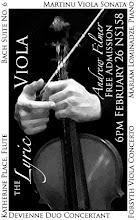When students approach shifting, the most important thing seems to become intonation. And while that is very important, what is more fundamental is learning to use the fingers correctly while shifting.
1. A relaxed violin hold
The main thing to do with shifting actually has nothing to do with the left hand at all – it is about holding the violin securely with the head. This means making sure that the jaw is not clamping down too hard, and a simple test of this is whether you can still talk while holding the violin – without the left hand. The reason why this is important is that a relaxed violin hold will allow the left hand to move easily up and down the instrument. A proper hold on the violin is the start to any good shifting: a straight back, balanced shoulders and ease of muscles.
2. A relaxed left hand
During a shift, the left hand must be relaxed. This means that the finger in use should take pressure off of the string – so that the string comes away from the fingerboard, but slightly more pressure than would be for harmonics. Thus, a shift actually involves a stage of a pressed note, a shift that is relaxed, and another pressed note.
When the finger is relaxed, the thumb can be relaxed as well.
3. Intonation
At this point one can think about intonation. There are a few methods that can be used in getting accurate shifts:
i. Playing during the shift: keep the bow going so that one hears the glissando. Then, when stopping the bow during the shift, one can still “hear” the distance being moved by the finger.
ii. Readjust your thinking: if playing a shift always gives a flat note, then aim to play sharp in order to get it in tune.
iii. Make sure shifts are one smooth movement along the instrument. If the fingers stop and start again during a shift, it is probably a problem with the violin hold or a left hand that is not relaxed enough – in which case one should go back and check on these matters before practicing more shifting.
Monday, July 09, 2007
Subscribe to:
Post Comments (Atom)







No comments:
Post a Comment